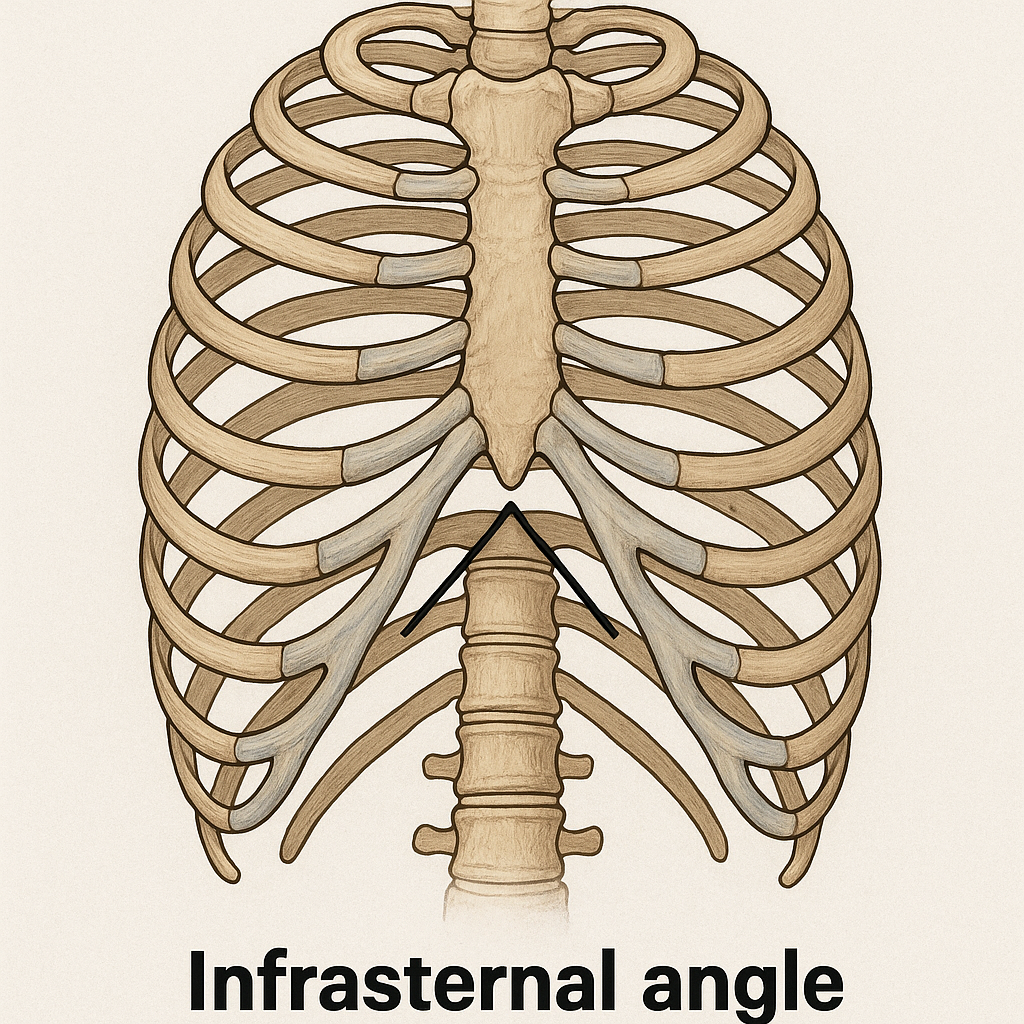The ribcage plays a central role in athletic performance, especially in overhead sports like baseball. One key measurement that often gets overlooked is the Infrasternal Angle (ISA)—a simple yet powerful indicator that can tell us a lot about an athlete's movement patterns, breathing mechanics, and injury risk.
What is the Infrasternal Angle?
The Infrasternal Angle is the angle formed at the bottom of the ribcage where the left and right costal margins meet at the xiphoid process (the bottom of the sternum). Think of it as the "V" shape at the bottom of your ribcage when you look down at your chest.
This angle typically ranges around 90 degrees in healthy individuals, but what's more important than the exact measurement is understanding what it tells us about an athlete's underlying movement patterns and potential compensations.
Why the ISA Matters
The ISA gives us insight into ribcage position, breathing patterns, and how the core stabilization system is functioning. It's a window into the athlete's movement quality and potential areas of dysfunction.
The Two Extremes: Wide vs. Narrow ISA
Wide ISA (> 90°)
- • Ribcage flared outward
- • Extended thoracic spine
- • Anterior pelvic tilt tendency
- • Overactive back extensors
- • Difficulty with deep core activation
- • Often associated with exhaled ribcage position
- • Diaphragm may be more descended and anteriorly oriented
Narrow ISA (< 90°)
- • Ribcage compressed inward
- • Flexed thoracic spine
- • Posterior pelvic tilt tendency
- • Overactive anterior core
- • Limited thoracic extension
- • Often linked to inhaled ribcage position
- • Diaphragm may be more ascended and posteriorly oriented
Implications for Overhead Athletes
For baseball players and other overhead athletes, the ISA has significant implications for performance and injury prevention. Here's why it matters:
Wide ISA Challenges:
Athletes with a wide ISA often struggle with scapular stability and may compensate with excessive lumbar extension during overhead movements. This can lead to:
- Impingement syndromes
- Lower back pain
- Difficulty achieving optimal pitching mechanics
- Reduced rotational power
Narrow ISA Challenges:
Athletes with a narrow ISA may have limited thoracic extension and shoulder flexion, leading to:
- Compensatory cervical extension
- Shoulder impingement
- Reduced overhead reach
- Altered throwing mechanics
Assessment and Measurement
Measuring the ISA is straightforward and can be done with simple tools. Here's how we assess it in our evaluations:
Assessment Protocol
- Have the athlete lie supine in a relaxed position
- Locate the xiphoid process and costal margins
- Use a goniometer to measure the angle
- Watch the ribcage as the person inhales
- Document findings and correlate with movement screens
Training Implications
Understanding an athlete's ISA helps guide our training approach. Rather than applying a one-size-fits-all program, we can tailor interventions based on their specific presentation:
For Wide ISA Athletes:
- Emphasize ribcage depression and posterior tilt
- Focus on deep core activation and control
- Integrate breathing exercises with movement
- Address hip flexor and back extensor tightness
For Narrow ISA Athletes:
- Work on thoracic extension mobility
- Improve shoulder flexion range of motion
- Address anterior core overactivity
- Enhance posterior chain activation
The Bottom Line
The ISA is just one piece of the assessment puzzle, but it's a valuable one. By understanding this simple measurement, we can better tailor our training approaches to each athlete's unique needs and help them move more efficiently while reducing injury risk.
Practical Applications
In our training programs, we use ISA findings to inform exercise selection, breathing strategies, and movement preparation. It's not about changing the angle itself, but rather addressing the underlying patterns that contribute to suboptimal positioning.
This individualized approach allows us to work with each athlete's unique anatomy and movement patterns, rather than against them. The result is more efficient movement, better performance, and reduced injury risk—exactly what we're looking for in high-level athletic development.

